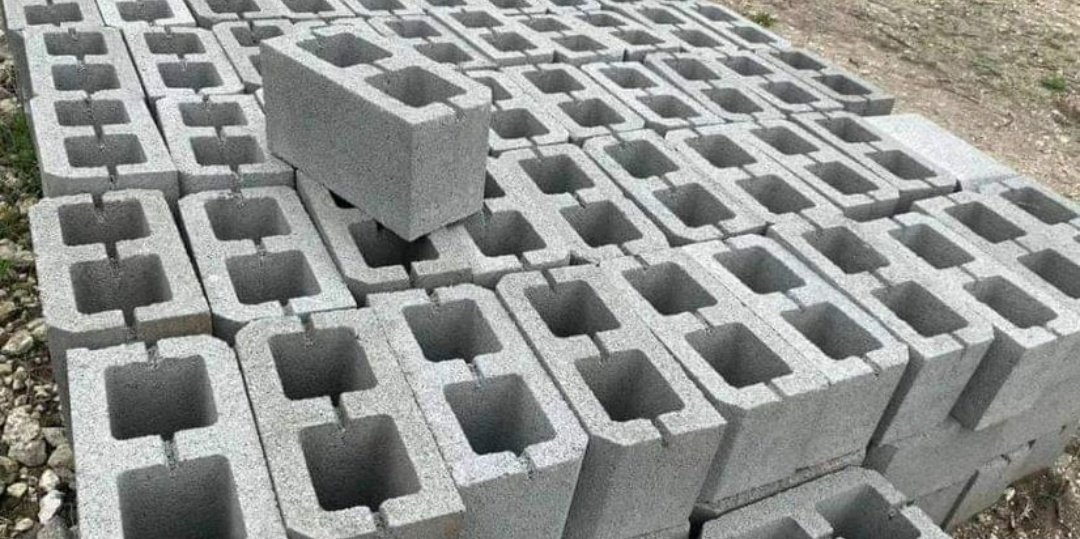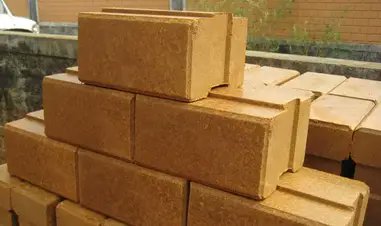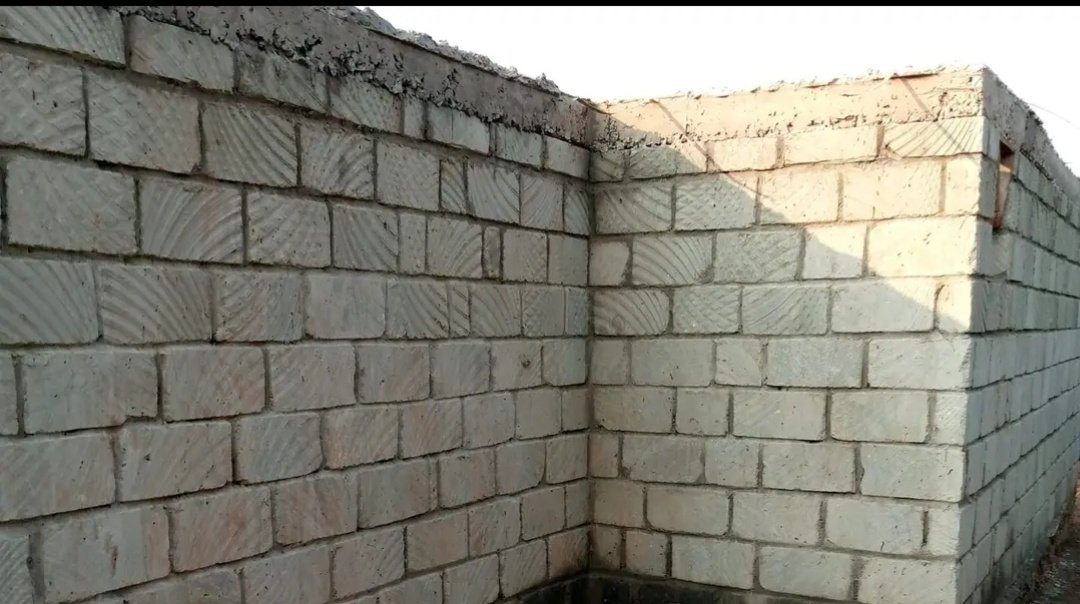CEMENT
Cement is a commonly used binding material in the construction. The cement is obtained by burning a mixture of calcareous (calcium) and argillaceous (clay) material at a very high temperature and then grinding the clinker so produced to a fine powder.
Cement is a commonly used binding material in the construction. The cement is obtained by burning a mixture of calcareous (calcium) and argillaceous (clay) material at a very high temperature and then grinding the clinker so produced to a fine powder.
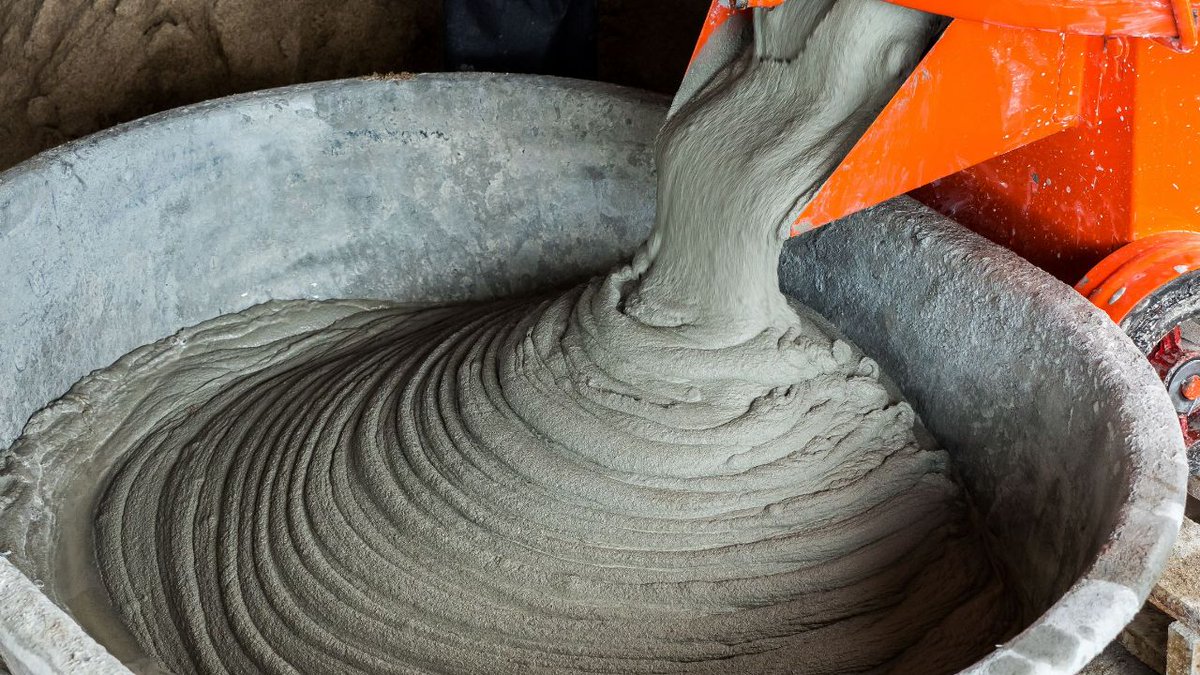
It was first produced by a mason Joseph Aspdin in England in 1924. He patented it as portland cement.
Types of Cement
In addition to ordinary portland cement there are many varieties of cement. Important varieties are briefly explained below:
Types of Cement
In addition to ordinary portland cement there are many varieties of cement. Important varieties are briefly explained below:
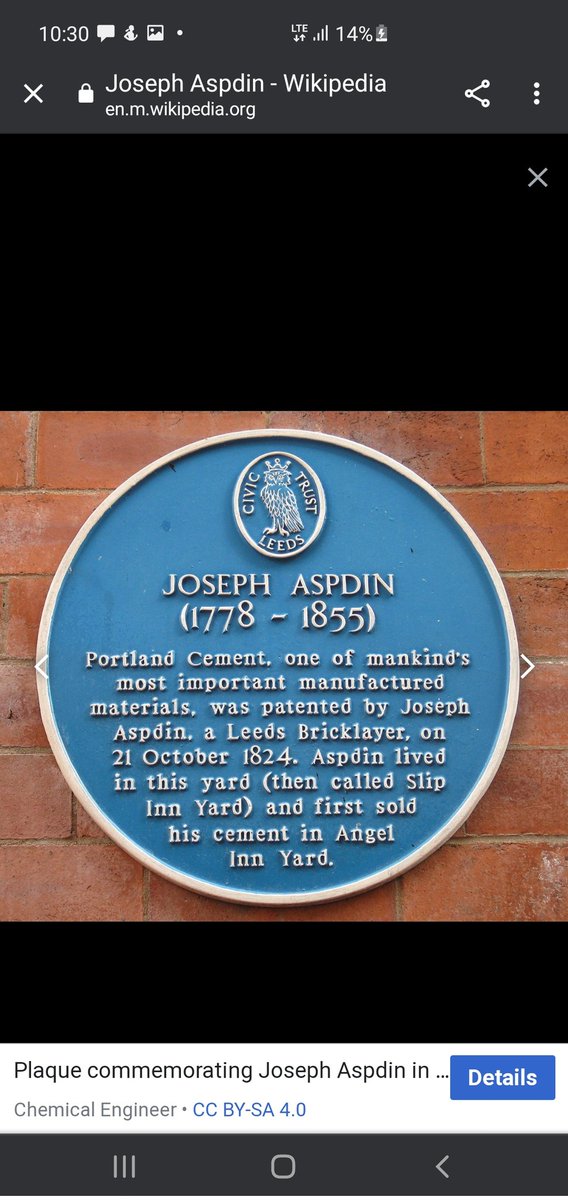
(i) White Cement:
The cement when made free from colouring oxides of iron, maganese and chlorium results into white cement. In the manufacture of this cement, the oil fuel is used instead of coal for burning.
The cement when made free from colouring oxides of iron, maganese and chlorium results into white cement. In the manufacture of this cement, the oil fuel is used instead of coal for burning.

White cement is used for the floor finishes, plastering, ornamental works etc. In swimming pools white cement is used to replace glazed tiles. It is used for fixing marbles and glazed tiles. 

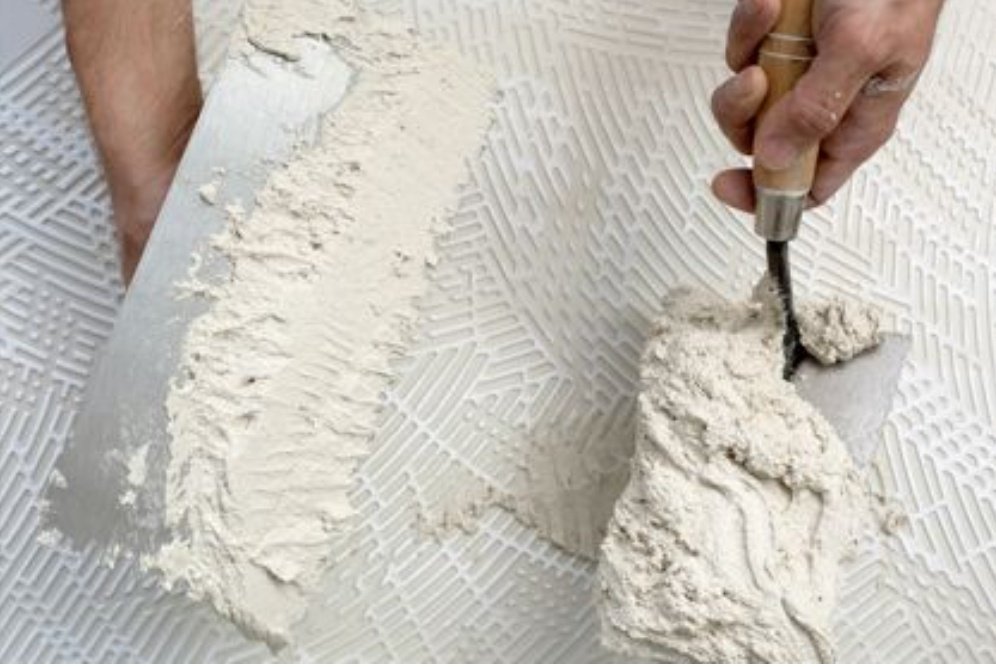
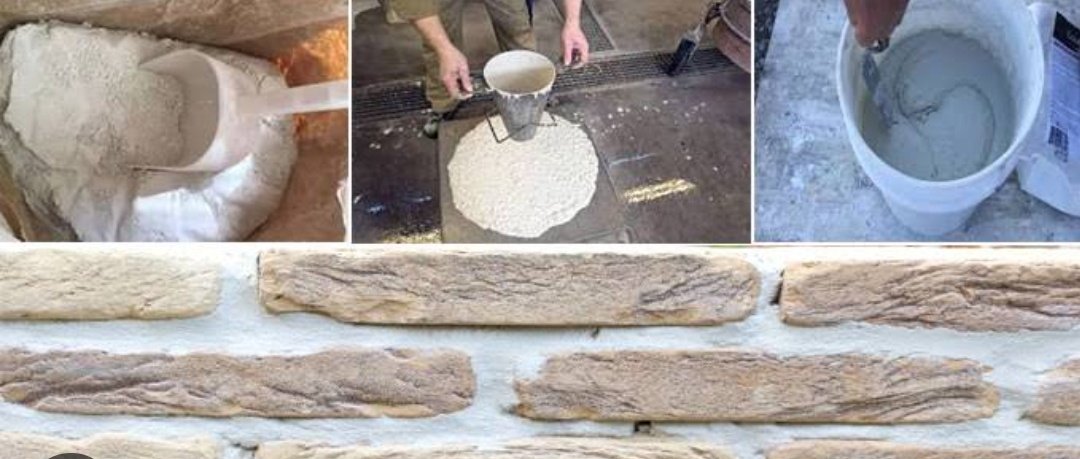
(ii) Coloured Cement:
The cements of desired colours are produced by intimately mixing pigments with ordinary cement. The chlorium oxide gives green colour. Cobalt produce blue colour.Iron oxide with different proportion produce brown, red or yellow colour.
The cements of desired colours are produced by intimately mixing pigments with ordinary cement. The chlorium oxide gives green colour. Cobalt produce blue colour.Iron oxide with different proportion produce brown, red or yellow colour.

Addition of manganese dioxide gives black or brown coloured cement. These cements are used for giving finishing touches to floors,walls, window sills, roofs etc.. 

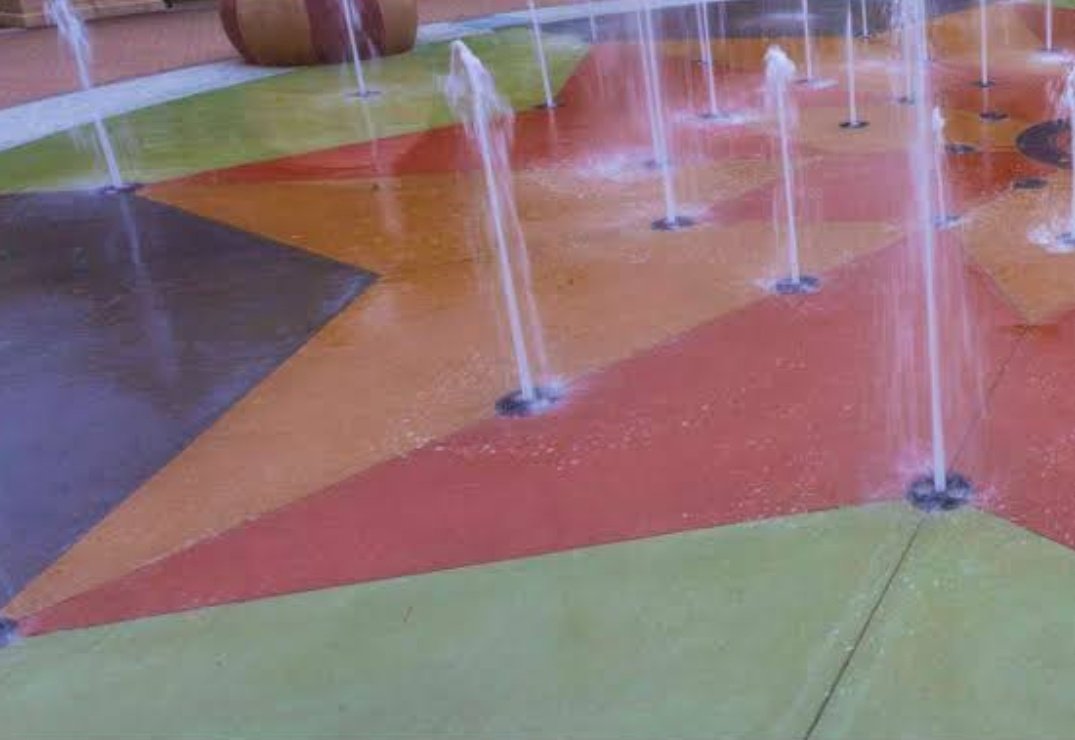
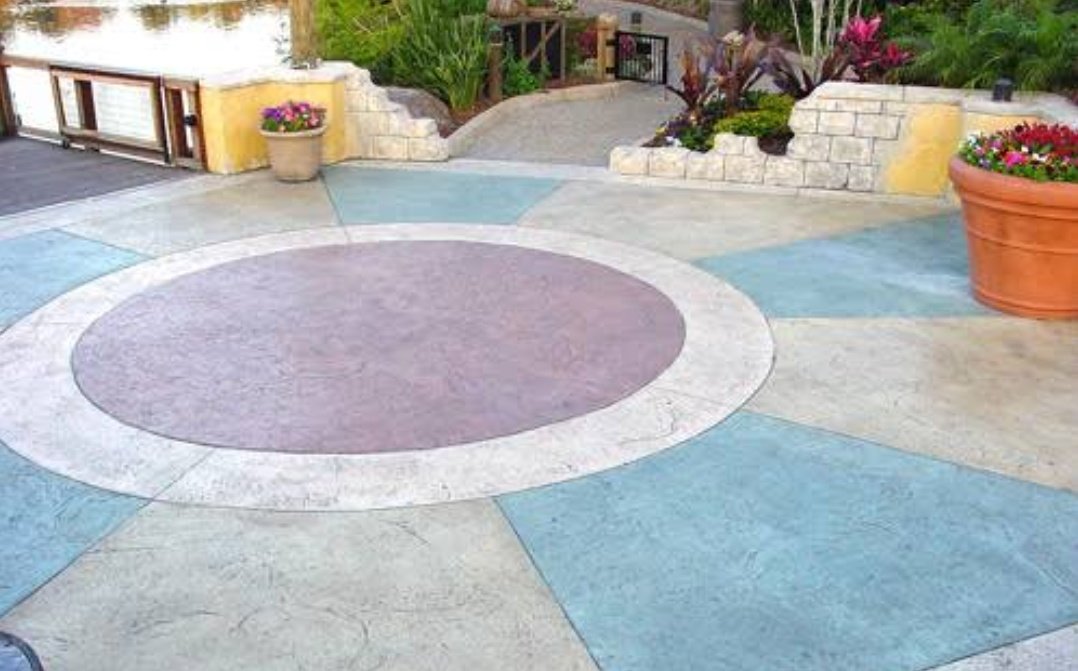
(iii) Quick Setting Cement:
Quick setting cement is produced by reducing the percentage of gypsum and adding a small amount of aluminium sulphate during the manufacture of cement. Finer grinding also adds to quick setting property. This cement starts setting within 5 minutes
Quick setting cement is produced by reducing the percentage of gypsum and adding a small amount of aluminium sulphate during the manufacture of cement. Finer grinding also adds to quick setting property. This cement starts setting within 5 minutes
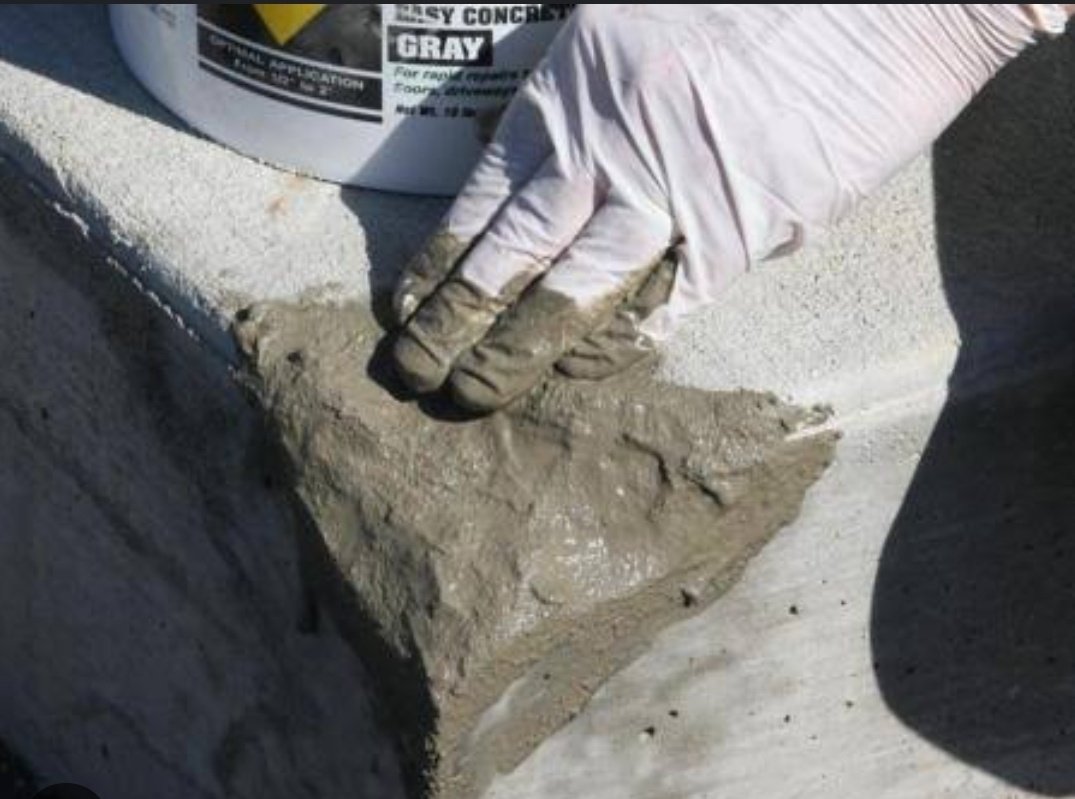
after adding water and becomes hard mass within 30 minutes. This cement is used to lay concrete under static or slowly running water.
(iv) Rapid Hardening Cement:
This cement can be produced by increasing lime content and burning at high temperature while manufacturing cement
(iv) Rapid Hardening Cement:
This cement can be produced by increasing lime content and burning at high temperature while manufacturing cement
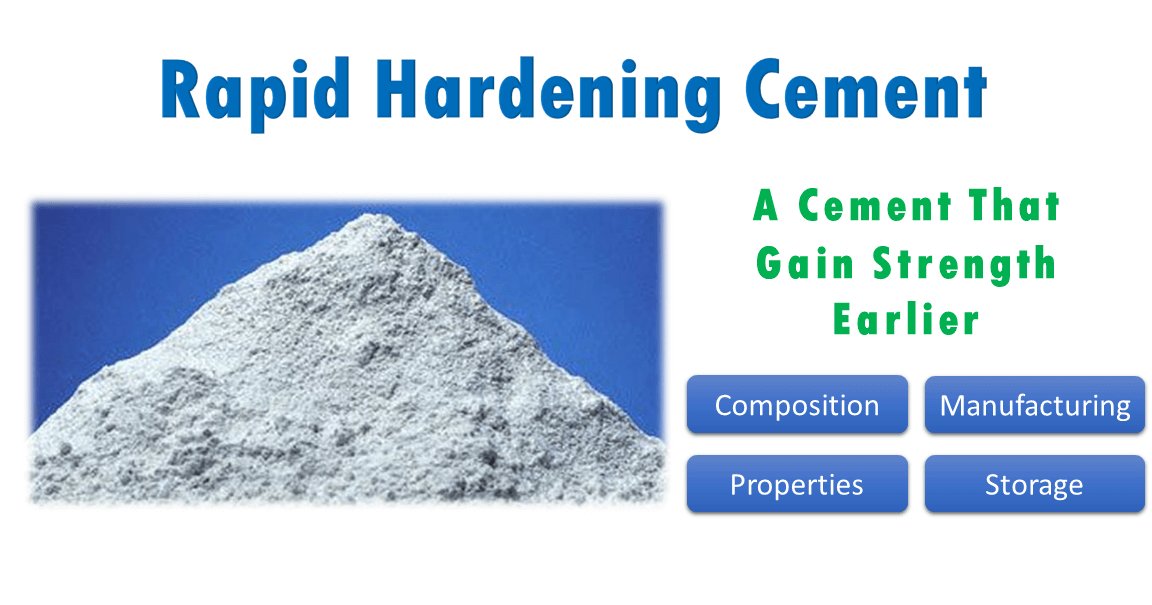
Grinding to very fine is also necessary. Though the initial and final setting time of this cement is the same as that of portland cement, it gains strength in early days. This property helps in earlier removal of form works and speed in construction activity. 

(v) Low Heat Cement:
In mass concrete works like construction of dams, heat produced due to hydration of cement will not get dispersed easily. This may give rise to cracks. Hence in such constructions it is preferable to use low heat cement.
In mass concrete works like construction of dams, heat produced due to hydration of cement will not get dispersed easily. This may give rise to cracks. Hence in such constructions it is preferable to use low heat cement.

This cement contains low percentage (5%) of tricalcium aluminate(C3A) and higher percentage (46%) of dicalcium silicate (C2S).
(vi) Pozzolana Cement:
It can be processed from shales and certain types of clay also. .
In this cement, Pozzolana material is 30 to 10 percent
(vi) Pozzolana Cement:
It can be processed from shales and certain types of clay also. .
In this cement, Pozzolana material is 30 to 10 percent

It can resist action of sulphate. It releases less heat during setting. It imparts higher degree of water tightness. Its tensile strength is high but compressive strength is low. It is used for mass concrete works. It is also used in sewage line works. 
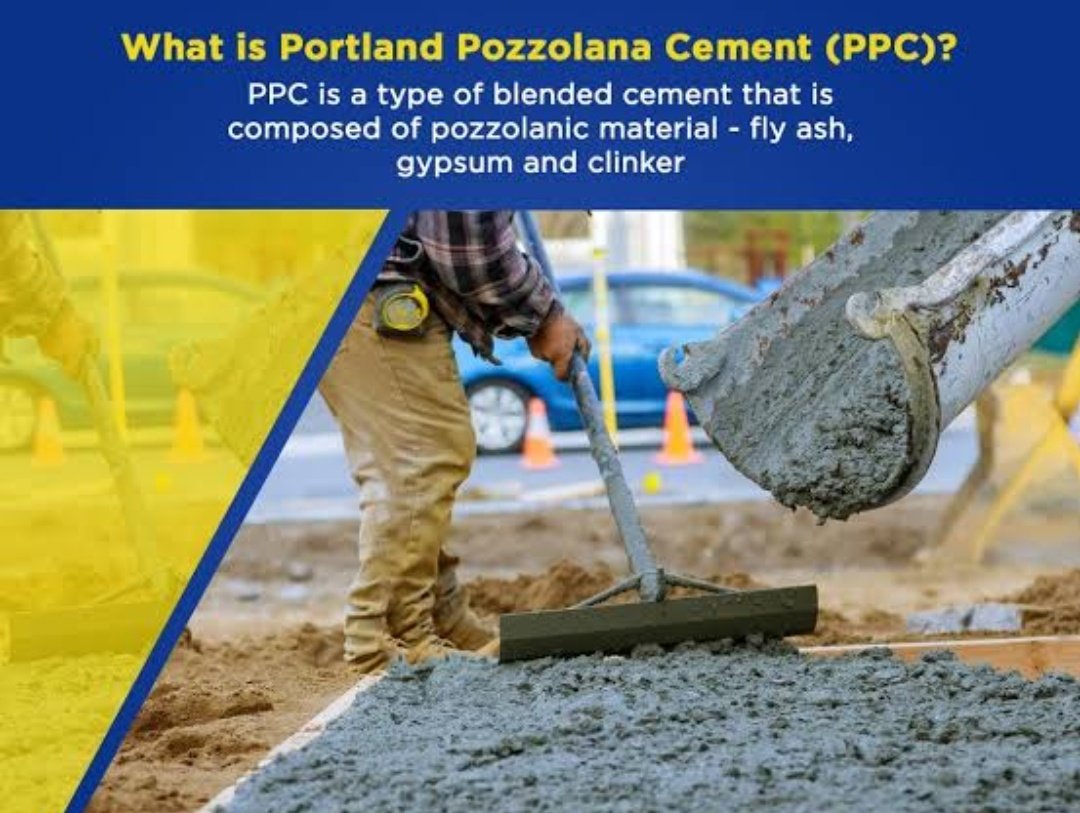
4⃣
(vii) Expanding Cement:
This cement expands as it sets. This property is achieved by adding expanding medium like sulpho aluminate and a stabilizing agent to ordinary cement. This is used for filling the cracks in concrete structures.
(vii) Expanding Cement:
This cement expands as it sets. This property is achieved by adding expanding medium like sulpho aluminate and a stabilizing agent to ordinary cement. This is used for filling the cracks in concrete structures.
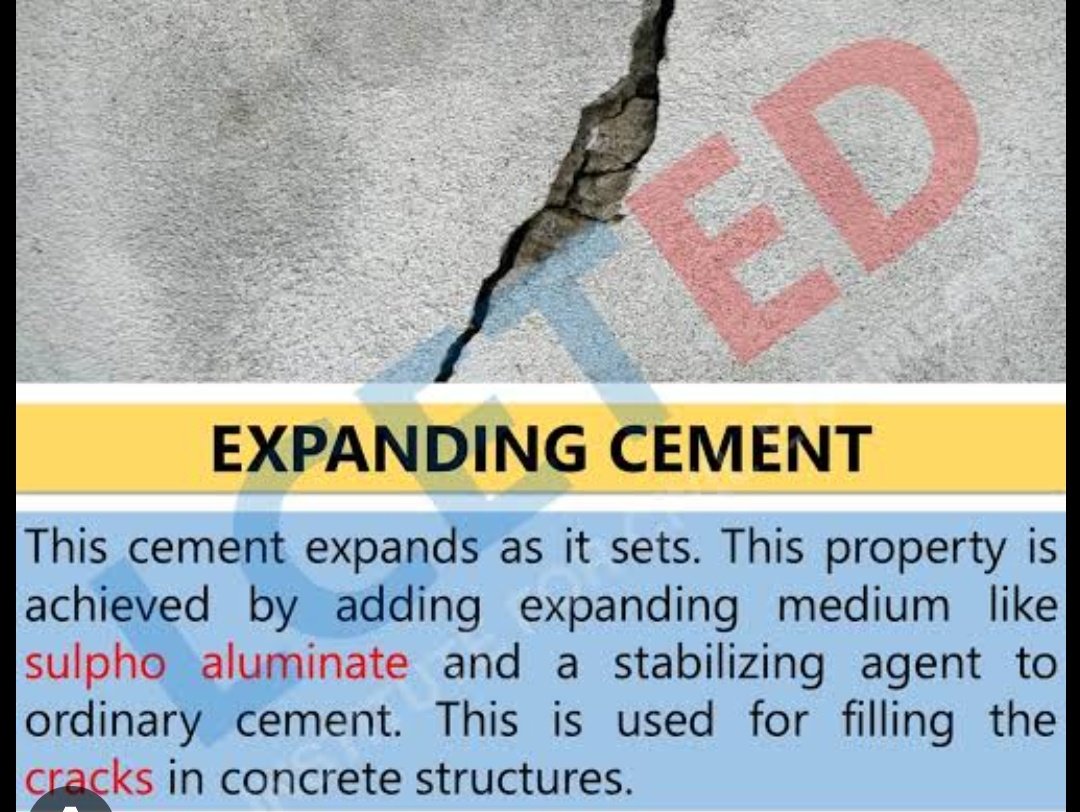
(viii) High Alumina Cement:
It is manufactured by calcining a mixture of lime and bauxite. It is more resistant to sulphate and acid attack. It develops almost full strength within 24 hours of adding water. It is used for underwater works.
It is manufactured by calcining a mixture of lime and bauxite. It is more resistant to sulphate and acid attack. It develops almost full strength within 24 hours of adding water. It is used for underwater works.

(x) Acid Resistant Cement:
This cement is produced by adding acid resistant aggregated such as quartz, quartzite, sodium silicate or soluble glass. This cement has good resistance to action of acid and water. It is commonly used in the construction of chemical factories.
This cement is produced by adding acid resistant aggregated such as quartz, quartzite, sodium silicate or soluble glass. This cement has good resistance to action of acid and water. It is commonly used in the construction of chemical factories.
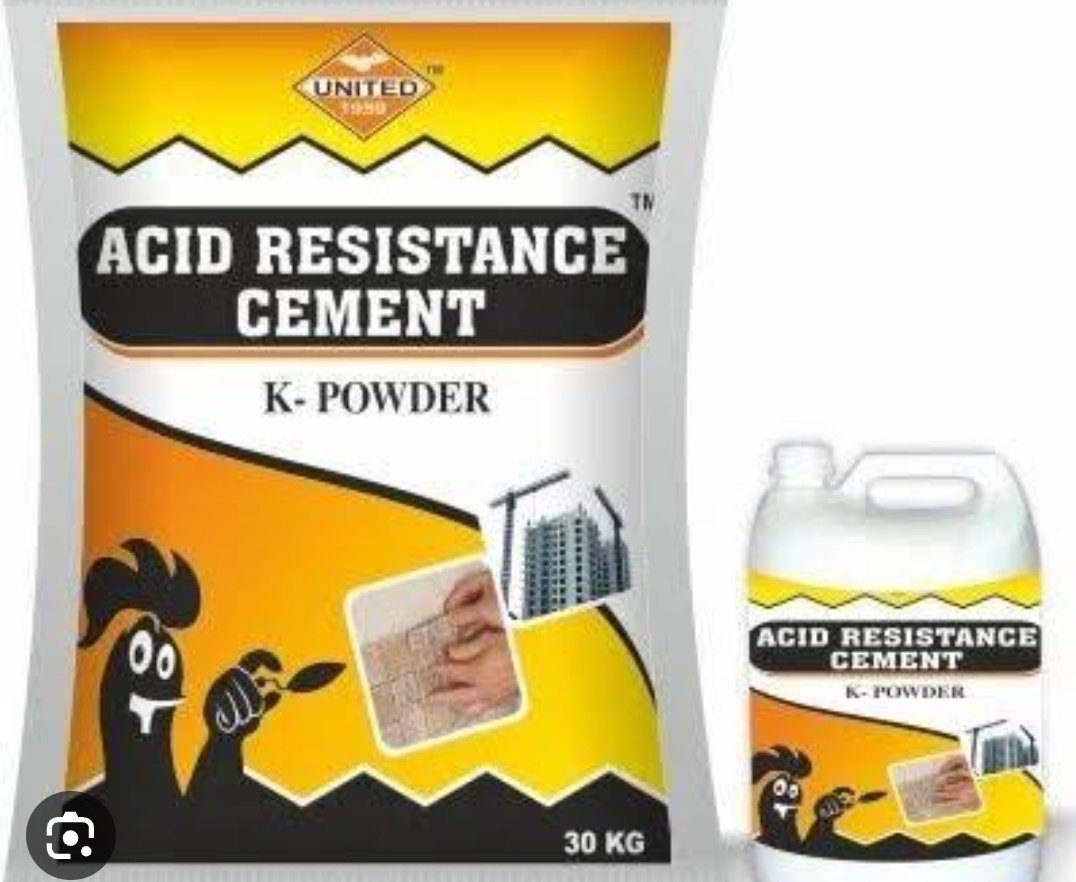
(xi) Sulphate Resistant Cement:
By keeping the percentage of tricalcium aluminate C3A below five per cent in ordinary cement this cement is produced. Used in the construction of structures which are likely to be damaged by alkaline conditions. E.g canals, culverts etc.
By keeping the percentage of tricalcium aluminate C3A below five per cent in ordinary cement this cement is produced. Used in the construction of structures which are likely to be damaged by alkaline conditions. E.g canals, culverts etc.
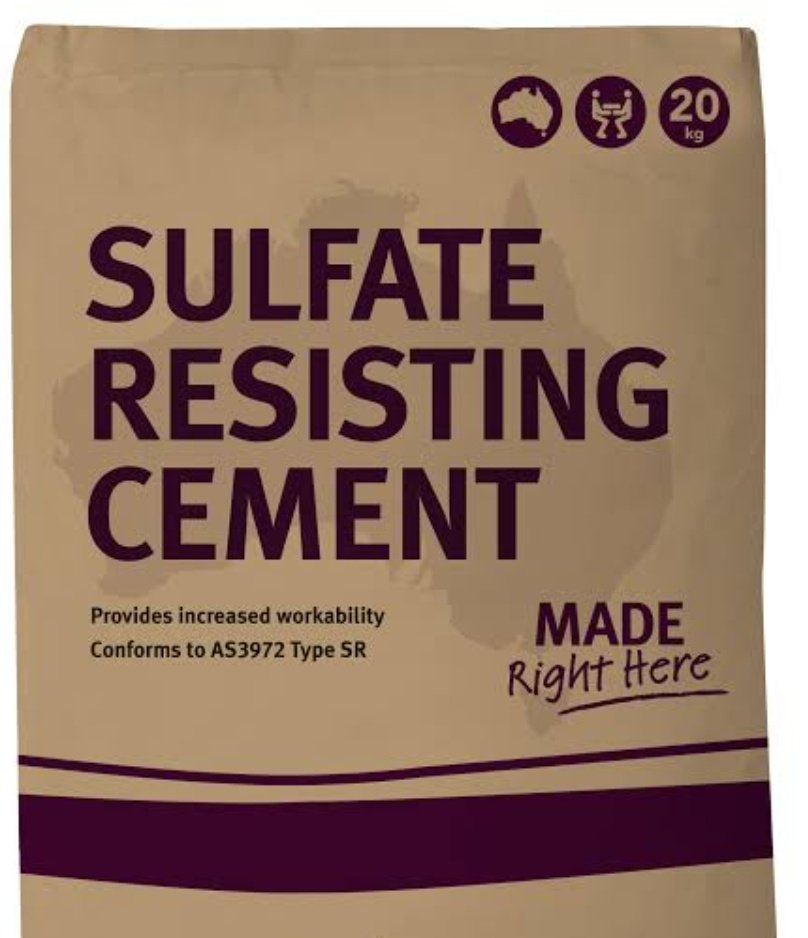
• • •
Missing some Tweet in this thread? You can try to
force a refresh



